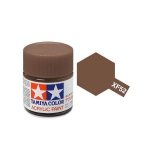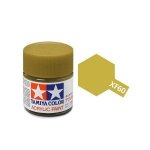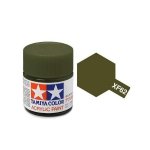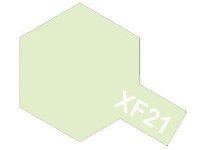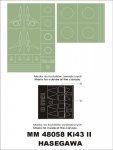-
Załączniki bezpieczeństwa
Załczniki do produktuZałączniki dotyczące bezpieczeństwa produktu zawierają informacje o opakowaniu produktu i mogą dostarczać kluczowych informacji dotyczących bezpieczeństwa konkretnego produktu
-
Informacje o producencie
Informacje o producencieInformacje dotyczące produktu obejmują adres i powiązane dane producenta produktu.KAGERO
-
Osoba odpowiedzialna w UE
Osoba odpowiedzialna w UEPodmiot gospodarczy z siedzibą w UE zapewniający zgodność produktu z wymaganymi przepisami.
Kagero 19009 Grumman F6F Hellcat vol. I EN/PL
Tomasz Szlagor, Leszek A. Wieliczko - Grumman F6F Hellcat vol. I
96 stron
135 zdjęć
5 zdjęć kolorowych
4 profile barwne (17 rzutów)
Tekst dwujęzyczny: polski i angielski.
Grumman F6F Hellcat był jednym z najlepszych samolotów myśliwskich II wojny światowej i najskuteczniejszym myśliwcem US Navy. To właśnie dzięki Hellcatom lotnictwo US Navy wywalczyło całkowitą dominację w powietrzu nad rozległymi obszarami Pacyfiku, walnie przyczyniając się do pokonania Japonii. Tom I prezentuje ten myśliwiec w pierwszym roku jego służby operacyjnej – od debiutu bojowego nad wyspą Marcus i na Salomonach w sierpniu 1943 roku, do zakończenia inwazji na Mariany późnym latem 1944 roku. W tym czasie Hellcaty brały udział m.in. w atakach lotniczych na Rabaul, Wake, Kwajalein i Truk oraz wspierały inwazję na Tarawę (Wyspy Gilberta). Kulminacją pierwszego roku służby Hellcatów w US Navy była inwazja na Mariany w czerwcu 1944 roku. W jej trakcie doszło do największej z dotychczasowych bitew lotniczo-morskich na Pacyfiku, znanej jako pierwsza bitwa na Morzu Filipińskim, a popularnie nazywanej „wielkim mariańskim strzelaniem do indyków” (Great Marianas Turkey Shot). Bitwa ta przetrąciła kręgosłup japońskiej flocie.
W czasie wojny jedynym zagranicznym użytkownikiem Hellcatów była Wielka Brytania, która pierwsze samoloty otrzymała w marcu 1943 roku. Aż do jesieni 1944 roku Hellcaty Royal Navy operowały głównie na wodach północnej Europy oraz na Morzu Śródziemnym, uczestnicząc m.in. w kilku atakach na kotwiczący w norweskim fiordzie niemiecki pancernik „Tirpitz”, w operacjach inwazyjnych w Normandii i południowej Francji oraz w działaniach na Morzu Egejskim.
Grumman F6F Hellcat was one of the best fighter aircraft of the World War Two era and the most effective fighter of the US Navy. There is no doubt that Hellcats won complete air superiority for the Americans over the vast areas of the Pacific, largely contributing to the victory over Japan. Volume One presents this legendary fighter in its first year of operational service – from the combat debut over Marcus Island and the Solomons in August 1943 until the end of the Marianas operation in late summer 1944. By then Hellcats participated, among others, in air strikes on Rabaul, Wake, Kwajalein and Truk, and supported the invasion of Tarawa in Gilbert Islands. The culmination of the Hellcats’ first year of service with the US Navy came about during the Marianas invasion in June 1944, when they took part in the First Battle of Philippine Sea. This largest aerial and naval battle in the Pacific to date broke the backbone of the Japanese Navy, and the Hellcats won such a tremendous victory in the air that the battle was aptly nicknamed the Great Marianas Turkey Shoot.
Throughout the war the only foreign user of Hellcats was Great Britain, receiving first aircraft in March 1943. Until late 1944 the Royal Navy Hellcats operated mainly in northern European waters and in the Mediterranean, participating in several air strikes on German battleship Tirpitz moored in Norwegian fiords, supporting Allied landings in Normandy and southern France, and joining operations in the Aegean Sea.
96 pages
135 photos
5 color photos
4 color profiles (17 throws)














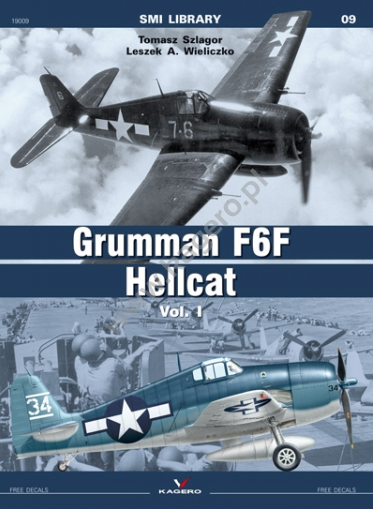
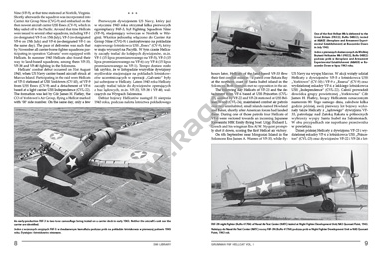
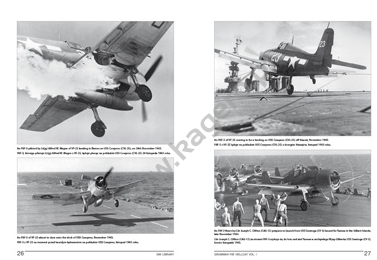
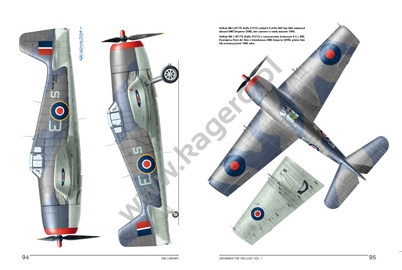
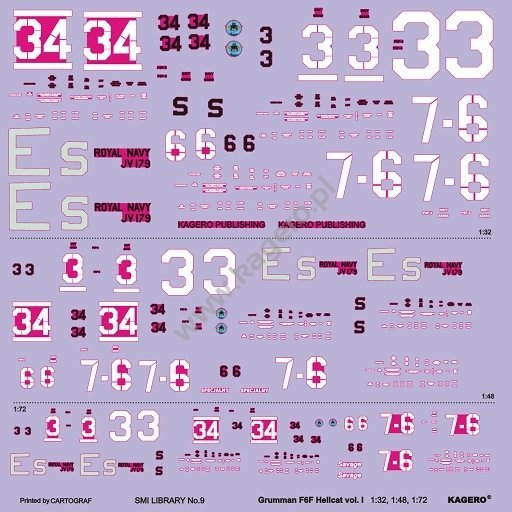
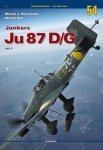
 1 szt.
1 szt.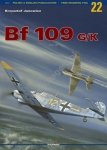
 2 szt.
2 szt.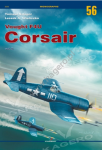
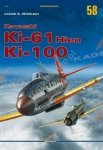
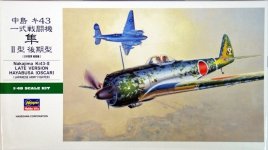
 19 szt.
19 szt.
